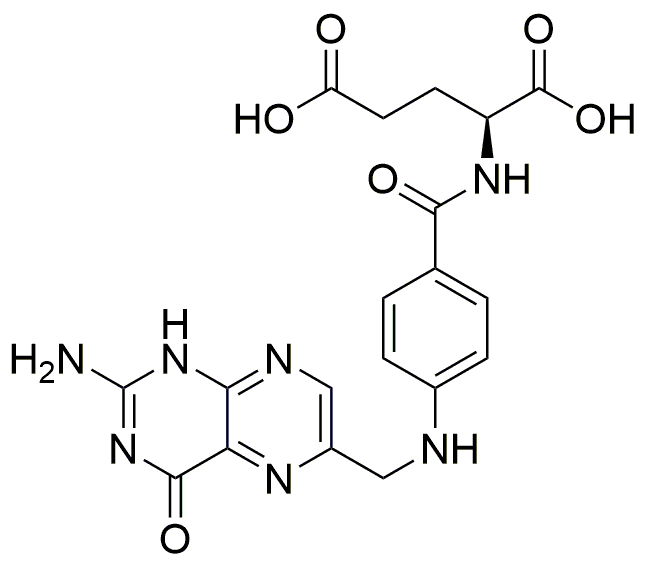Folic acid is widely utilized in research focused on:
- Nutritional Supplements: Commonly found in multivitamins, it supports prenatal health by reducing the risk of neural tube defects in developing fetuses.
- Food Fortification: Added to cereals and bread to prevent folate deficiency in populations, enhancing overall public health.
- Pharmaceuticals: Used in the treatment of certain types of anemia and as part of chemotherapy regimens to mitigate side effects in cancer patients.
- Research in Genetics: Investigated for its role in DNA synthesis and repair, providing insights into genetic disorders and potential therapies.
- Cardiovascular Health: Studied for its ability to lower homocysteine levels, which may reduce the risk of heart disease.
General Information
Properties
Safety and Regulations
Applications
Folic acid is widely utilized in research focused on:
- Nutritional Supplements: Commonly found in multivitamins, it supports prenatal health by reducing the risk of neural tube defects in developing fetuses.
- Food Fortification: Added to cereals and bread to prevent folate deficiency in populations, enhancing overall public health.
- Pharmaceuticals: Used in the treatment of certain types of anemia and as part of chemotherapy regimens to mitigate side effects in cancer patients.
- Research in Genetics: Investigated for its role in DNA synthesis and repair, providing insights into genetic disorders and potential therapies.
- Cardiovascular Health: Studied for its ability to lower homocysteine levels, which may reduce the risk of heart disease.
Documents
Safety Data Sheets (SDS)
The SDS provides comprehensive safety information on handling, storage, and disposal of the product.
Product Specification (PS)
The PS provides a comprehensive breakdown of the product’s properties, including chemical composition, physical state, purity, and storage requirements. It also details acceptable quality ranges and the product's intended applications.
Certificates of Analysis (COA)
Search for Certificates of Analysis (COA) by entering the products Lot Number. Lot and Batch Numbers can be found on a product’s label following the words ‘Lot’ or ‘Batch’.
*Catalog Number
*Lot Number
Certificates Of Origin (COO)
This COO confirms the country where the product was manufactured, and also details the materials and components used in it and whether it is derived from natural, synthetic, or other specific sources. This certificate may be required for customs, trade, and regulatory compliance.
*Catalog Number
*Lot Number
Safety Data Sheets (SDS)
The SDS provides comprehensive safety information on handling, storage, and disposal of the product.
DownloadProduct Specification (PS)
The PS provides a comprehensive breakdown of the product’s properties, including chemical composition, physical state, purity, and storage requirements. It also details acceptable quality ranges and the product's intended applications.
DownloadCertificates of Analysis (COA)
Search for Certificates of Analysis (COA) by entering the products Lot Number. Lot and Batch Numbers can be found on a product’s label following the words ‘Lot’ or ‘Batch’.
*Catalog Number
*Lot Number
Certificates Of Origin (COO)
This COO confirms the country where the product was manufactured, and also details the materials and components used in it and whether it is derived from natural, synthetic, or other specific sources. This certificate may be required for customs, trade, and regulatory compliance.


